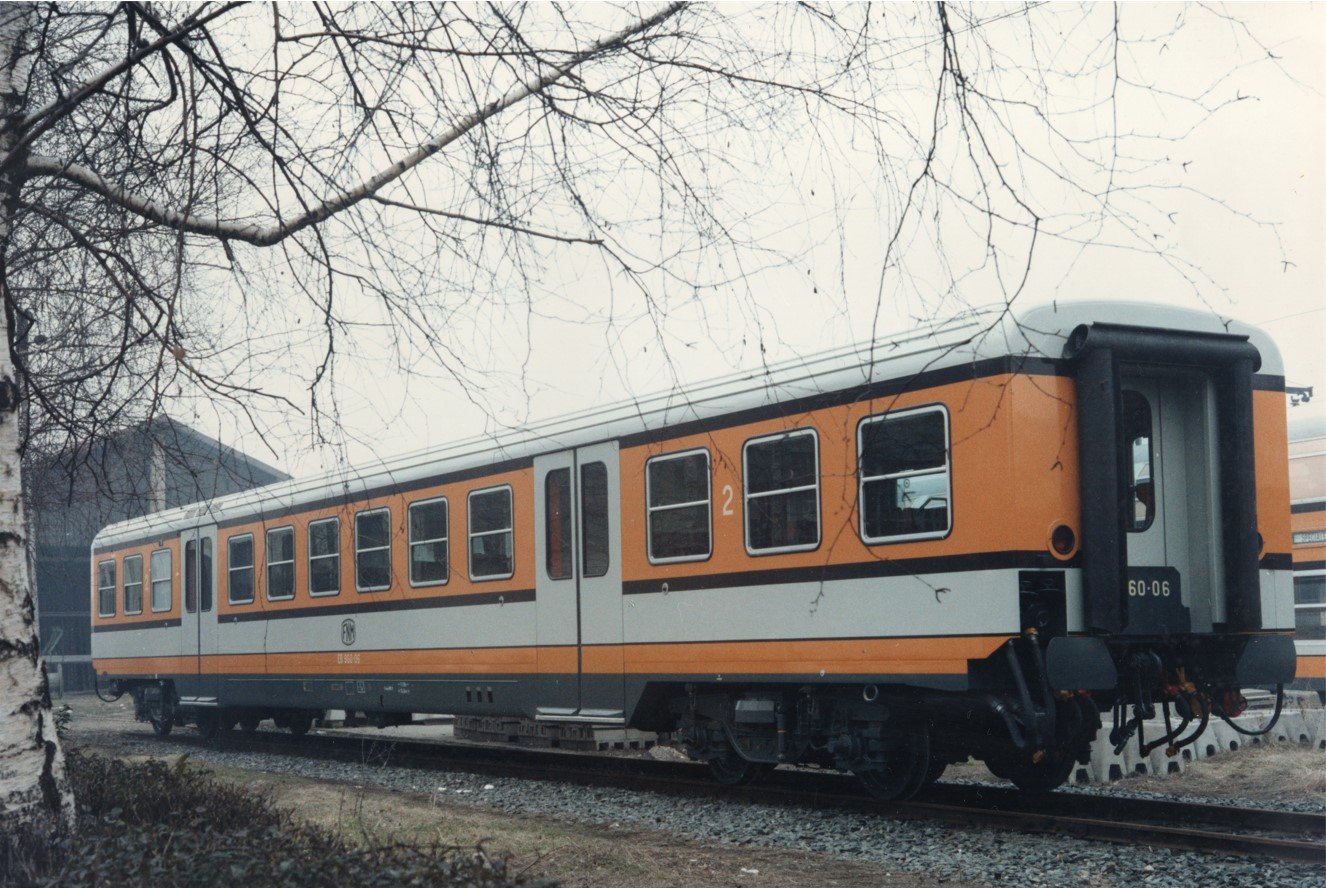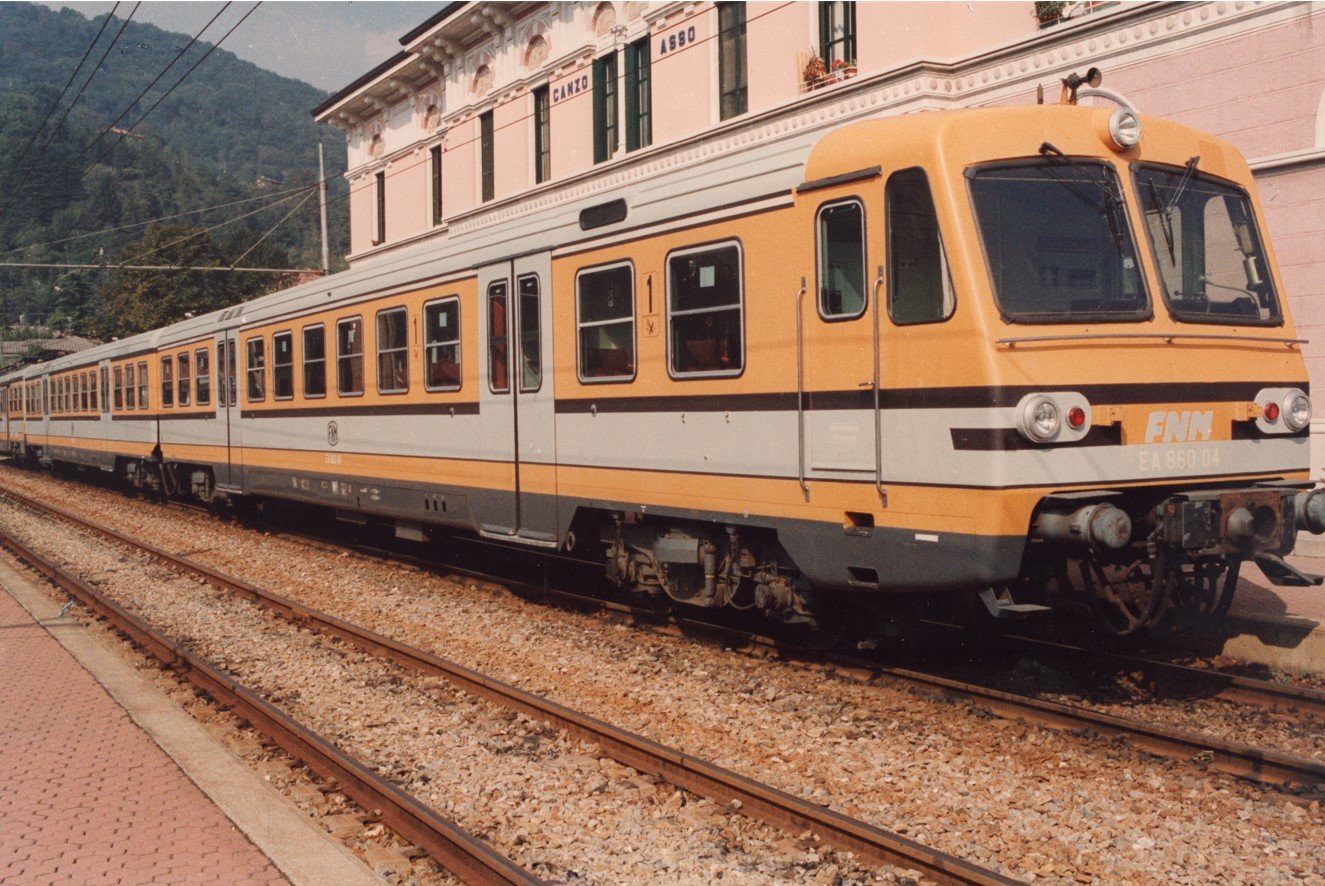The single-deck coaches built by SOCIMI and supplied to FNM in a few dozen units were of the Hinterland type. Self-supporting electro-welded tubular frame. Mounted on newly designed Easy Ride bogies with primary suspension in rubber/metal and pneumatic secondary suspension with hydraulic dampers. Disc braking system, as for the Casaralta coaches, and wheel slide protection. The body in continuous panels welded to the framework and the roof in corrugated sheet metal allowed the weight to be kept down to 34 tons, and to 37 on the coaches fitted with a static converter or driving cab. They were supplied between 1981 and 1984 and placed in composition with the new E 750 Full-Chopper traction electric railcars or in shuttle trains with the 6 E 620 Ansaldo locomotives. Pneumatically operated two-leaf sliding doors, blown-air heating, neon lighting and Klein windows. Maximum speed allowed up to 130 km/h.
Socimi

- Progettazione: 1981
- Costruzione: 1981-1984
- Esercizio: dal 1981
- Massa a pieno carico: t. 34 - 37
- Carrelli: SOCIMI Easy-ride
- Diametro ruote Ø: 840 mm
- Costruttore: SOCIMI - Milano
- Lunghezza fuori tutto: 24.300 mm
- Larghezza: 2.780 mm
- Altezza imperiale: 3700 mm
- Passo carrelli: 2.360 mm
- Passo totale: 19.860 mm
- Interperno carrelli: 17.500 mm
- Freni: a disco
- Velocità massima: 130 Km/h
- Posti a sedere: 88-92
- Riscaldamento: aria soffiata
- Illuminazione: tubi al neon
- Design date: 1981
- Build date: 1981-1984
- Service date: from 1981
- Gross weight: 34 - 37 tons
- Bogies: SOCIMI Easy-ride
- Wheel diameter Ø: 840 mm
- Builder: SOCIMI - Milan
- Overall length: 24,300 mm
- Width: 2,780 mm
- Roof height: 3700 mm
- Bogie wheelbase: 2,360 mm
- Overall wheelbase: 19,860 mm
- Distance between bogie centres: 17,500 mm
- Braking system: disc
- Maximum speed: 130 Km/h
- Passenger capacity: 88-92 seats
- Heating: forced air
- Lighting: Neon tube
The coaches had a smooth, linear body divided into three compartments to a design by architects Koenig and Segoni. A larger central compartment of 6 modules, and two end compartments with three modules. These were separated by two access vestibules. These permitted boarding and disembarking via two pneumatically operated sliding doors which, once unlocked, could be operated by passengers with a button. Access was via three steps. The seated capacity varied according to the type of arrangement: 92 for basic equipped trailers and 88 for pilot coaches, divided into three compartments. Upholstered couch-style seating in two rows with central aisle. The seats and backrests were covered with Sky leatherette. The lighting was neon with fittings running along the ceiling. Also running along the ceiling, above the Klein windows, were the luggage racks. The toilet was accessed from a platform. These were very comfortable coaches, appreciated for their spaciousness, brightness and smooth ride.

